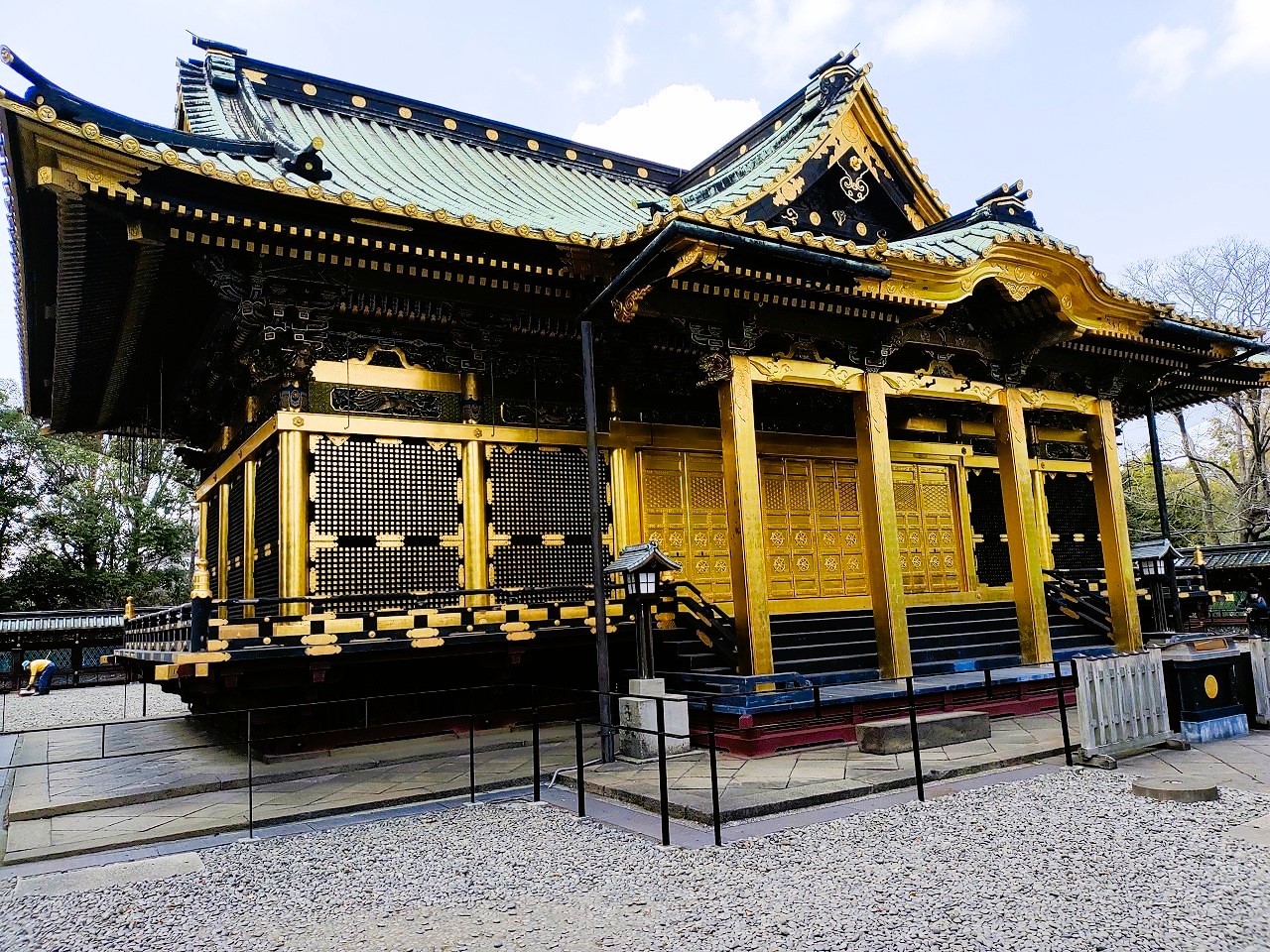The Ueno Toshogu Shrine is one of the highlights of our tour in Ueno Park. Ieyasu Tokugawa (1543-1616), the founder and the first shogun of the 265-year-long Edo period(1603-1868), is enshrined as a god. He brought the century of the civil wars to an end and built the foundation for a peaceful country and is considered as one of the most outstanding figures in history.
In the beginning of the Edo period, when Ieyasu fell into a critical condition, he called on hisclose vassals to his bedside and asked them as his last will to build a place where he could rest eternally. That was the beginning of the Ueno Toshogu Shrine. Soon after the original building was constructed, it was renovated and reconstructed on a grander scale for the Edo citizens who couldn’t easily travel to the distant Nikko Toshogu Shrine. The Ueno Toshogu Shrine is as gorgeous as the shrine in Nikko and remains intact for about 370 years.
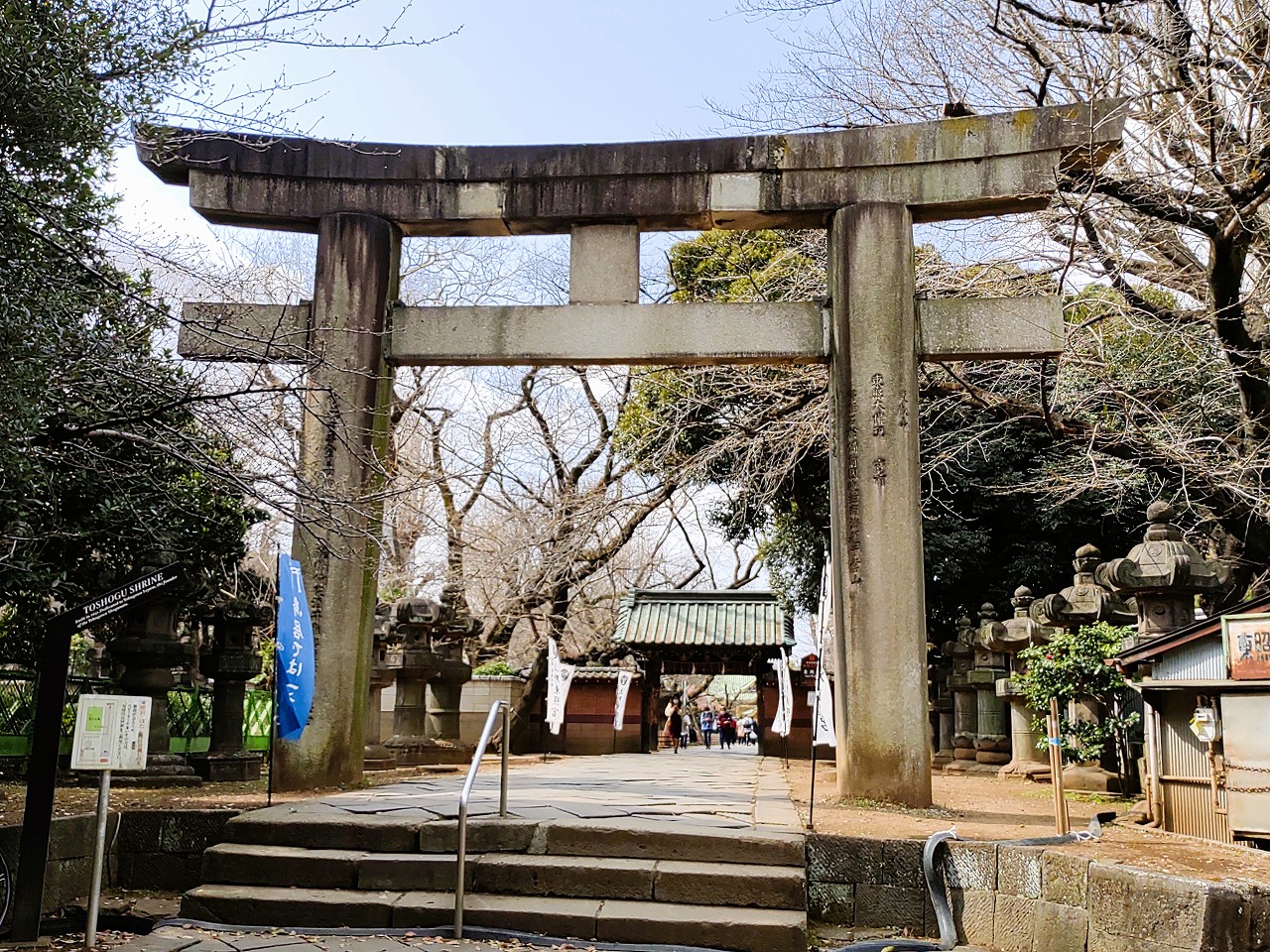
The stone gate is called the torii gate which is unique to the shrine. The gate represents the boundary between the sacred zone and the secular world. At the time of the Great Kanto Earthquake of 1923, many torii gates collapsed but this gate stood firmly and didn’t move an inch.
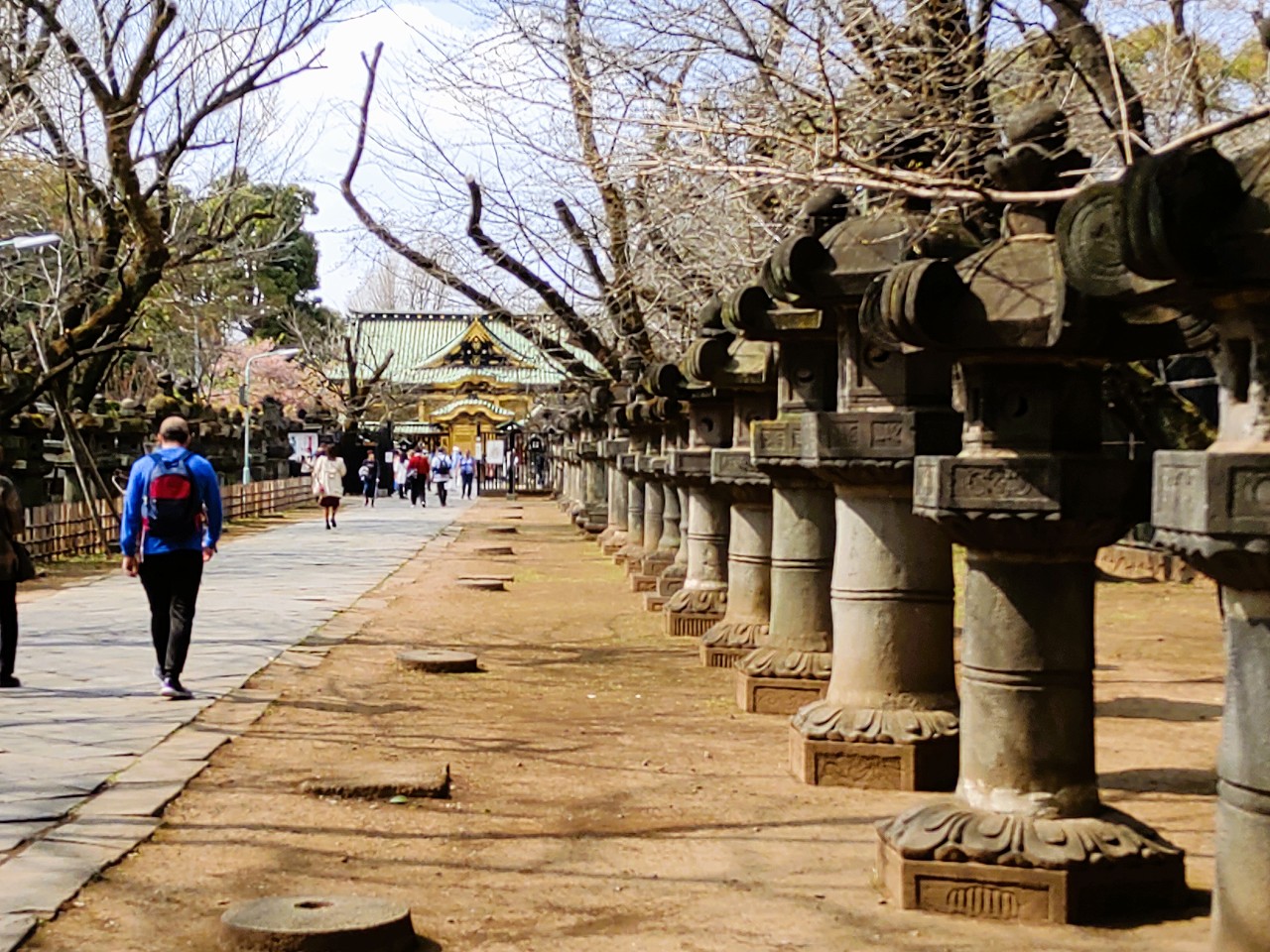

Beyond the stone gate is a long pathway to the shrine building. More than 200 stone lanterns and 48 bronze lanterns are lined up in order.

Among them, a 6.8-meter stone lantern looks awesome in comparison with other lanterns. Because of its size, it earned the nick name ‘Monster lantern’. It is said to be one of the three great stone lanterns of Japan. The other two stone lanterns are in Kyoto Nanzenji Temple and Nagoya Atsuta Shrine.
All of these lanterns were offered by the feudal lords to show loyalty to the Tokugawa family when the building was reconstructed in the early Edo period. They were used for rituals such as sacred fires but are currently not in use. The names of the donors and the dates are inscribed on each lantern.
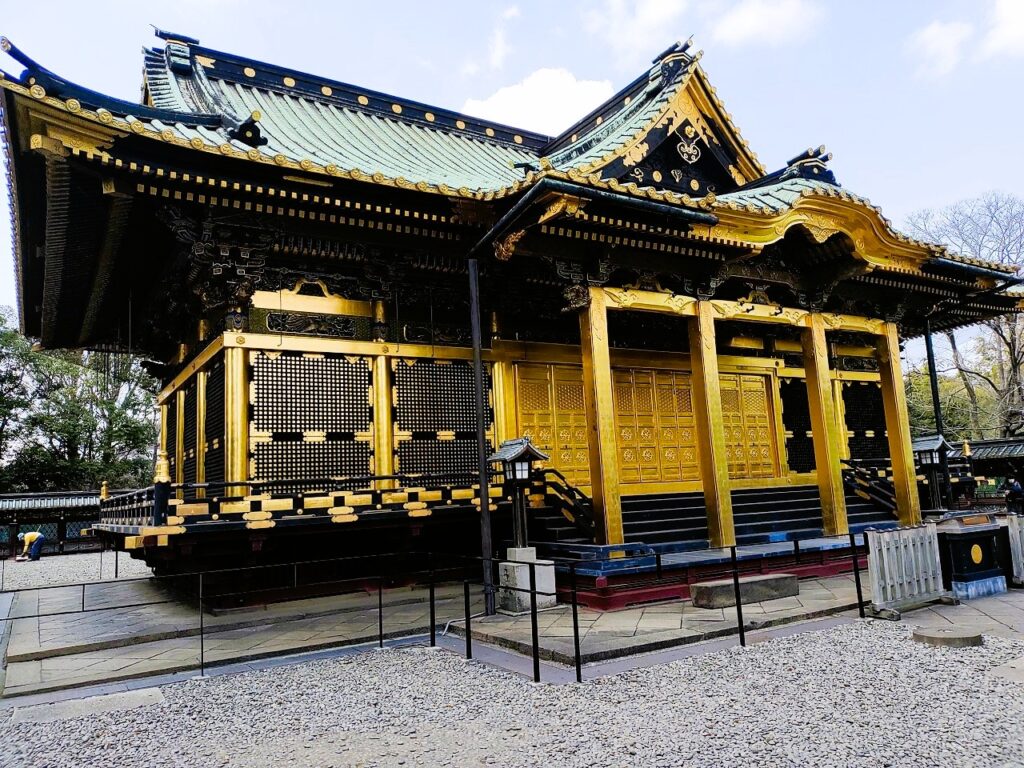
The shrine building is a typical example of the Edo period architecture. There are three halls: Worship, offering, and the main hall, which are connected to each other. The walls and the ceilings are richly carved. All the doors and pillars are covered in gold foil. The building has a copper roof. They are absolutely beautiful. Unfortunately, the interior of the building is closed to the public due to preservation purposes, but you can enter the inner garden to take a closer look. Admission fee is 500 yen and it’s worth the price.
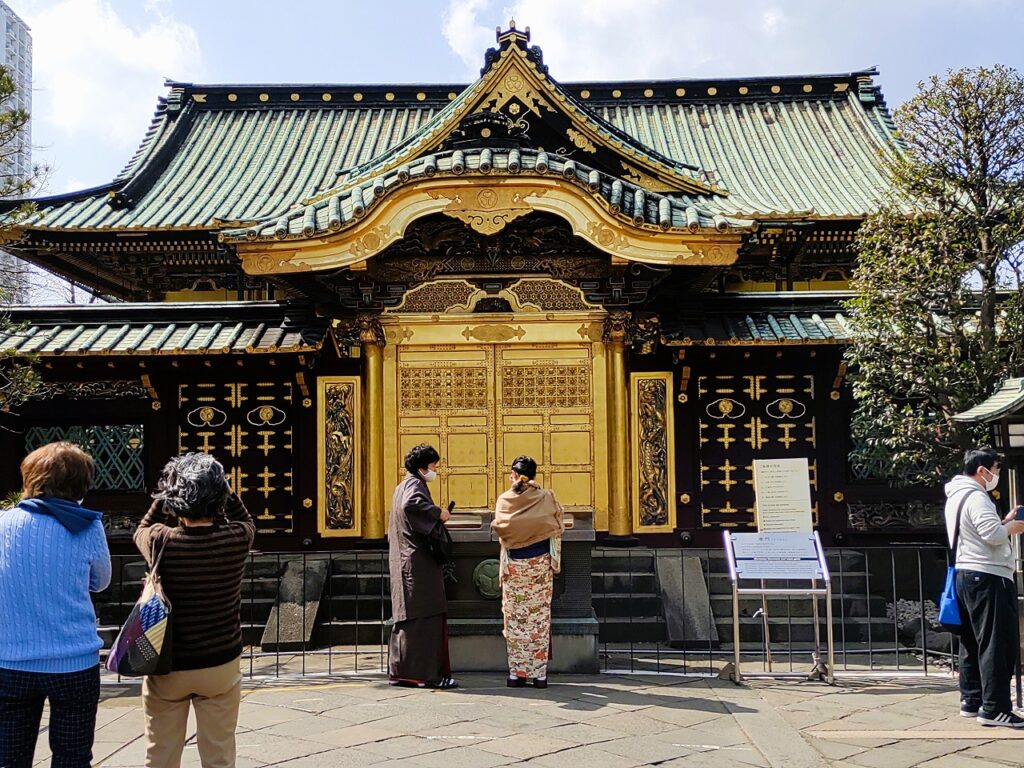
The front gate with a bow-shaped arch is called the kara-mon or a Chinese-style gate. However, it’s pure traditional Japanese architecture and isn’t a Chinese-origin. It’scommonly seen at Buddhist temples, Shinto shrines and castles. It was a powerful symbol of authority.
A pair of dragons are elaborately carved on both panels. They are ascending and descending dragons. The dragon on the left is looking up and the one on the right is looking down. You may think the dragon looking up is an ascending dragon and the one looking down is a descending dragon. However, it’s philosophically opposite. The dragon looking up is descending and the one looking down is ascending as they say the boughs that bear most hang lowest. These are the works of Hidari Jingoro, a famous sculptor in the Edo period and the pair of dragons are believed to sneak off to go down to the Shinobazu Pond to drink water at midnight. It’ll be fun to watch the sculptures while you consider which is ascending and which is descending.

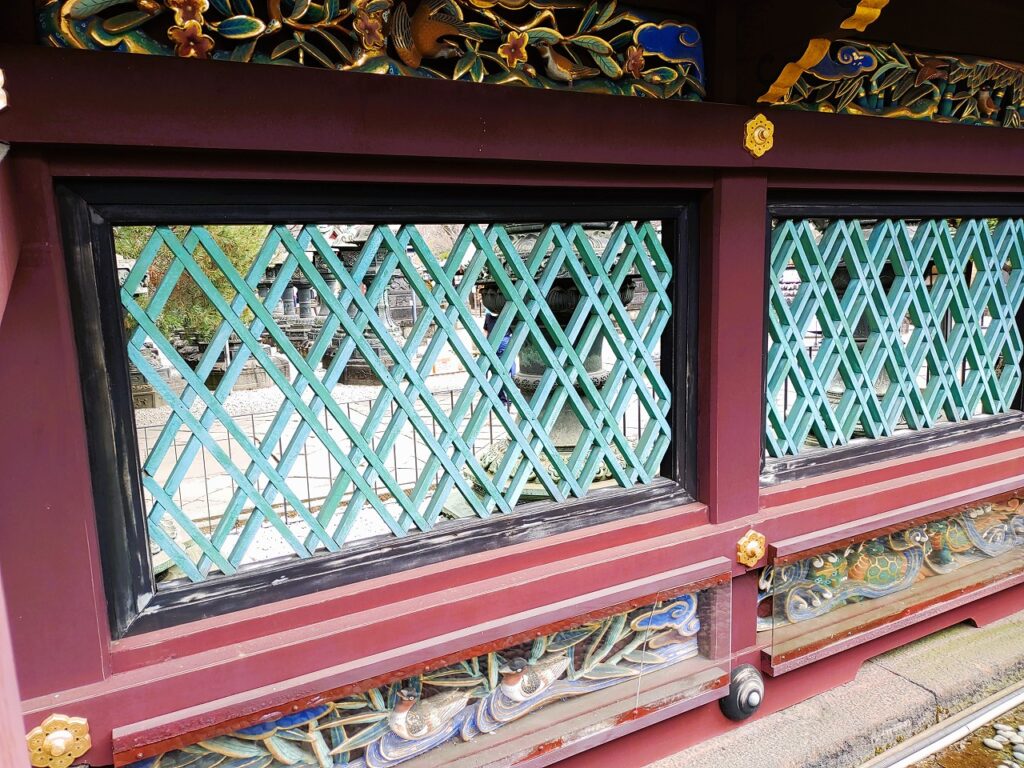
Six massive bronze lanterns in front of the building are eye-catching. They were donated by the three privileged branches of the Tokugawa family. The surrounding fence is a see-through structure with vivid animal sculptures.
Aside from Ieyasu, the Shrine is dedicated to the spirits of the eighth shogun Yoshimune (1684-1751) and the 15th and last shogun Yoshinobu (1837-1913).
It is miraculous that the shrine building, the kara-mon gate, the lanterns, the see-through fence and the stone gate have all survived earthquakes, fires, lightnings and the wars, and remain perfect for about 370 years. People visit the Ueno Toshogu Shrine to pray for happiness, good health and longevity.
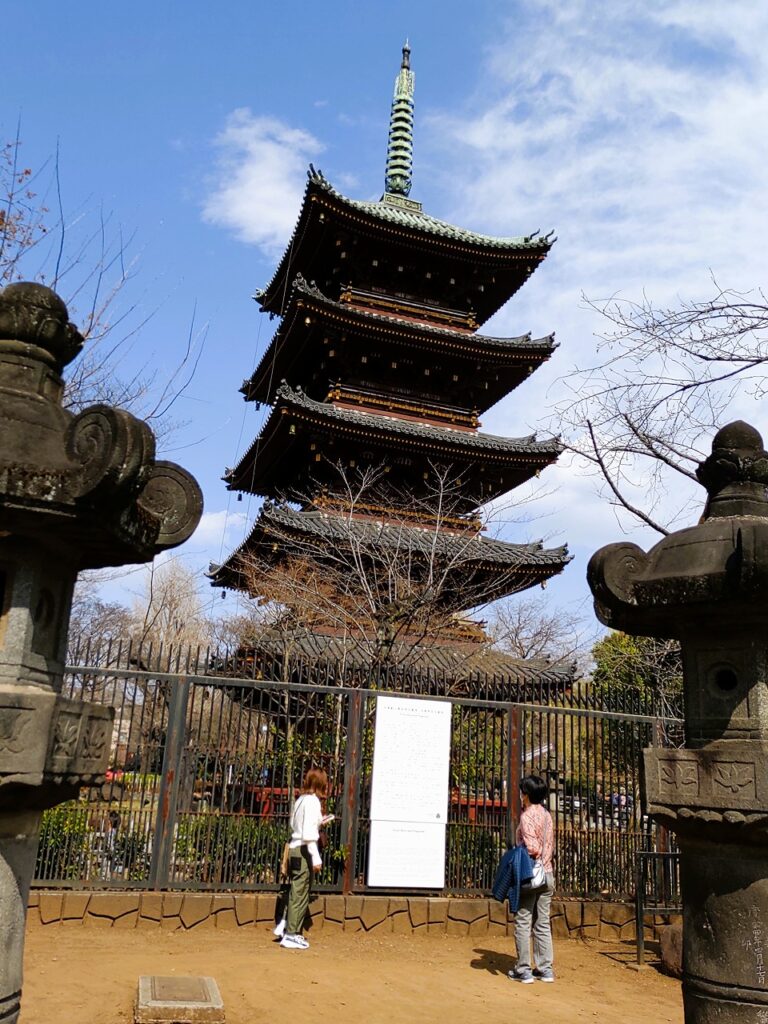
The traditional five-story pagoda is seen beyond the fence. It has been standing for about 380 years. The wooden pagoda originally belonged to the Toshogu shrine but is now the property of the Tokyo Metropolitan Government and located in the Ueno Zoo. It’s one of 22 five-story pagodas which were built by the end of the Edo period. There are two such five-story pagodas in Tokyo and this is one of them. The tower looks nice from the shrine grounds.
The Ueno Toshogu Shrine is normally not crowded and quiet, making visitors feel calm and solemn. Join us and spend pleasant time in Ueno Park.
(Yoshi)

